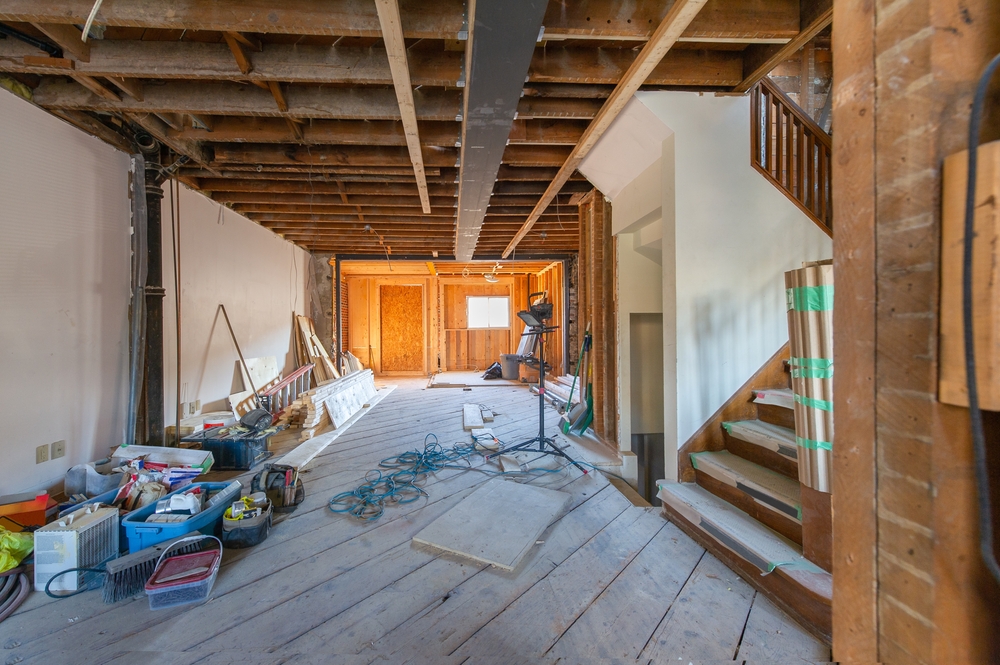How Remodeling Affects HVAC Load Requirements: What You Need to Know
Remodeling your home is an exciting endeavor, offering the opportunity to update and customize your living space to better suit your needs and tastes. However, many homeowners overlook a critical aspect of remodeling: the impact on their HVAC (heating, ventilation, and air conditioning) system. In Florida, where the climate can be challenging with high humidity and intense heat, ensuring that your HVAC system is adequately sized and configured after a remodel is crucial. This article will delve into how remodeling affects HVAC load requirements, with a focus on Florida state building codes, to help you make informed decisions.
Understanding HVAC Load Calculations
Before diving into the effects of remodeling, it’s essential to understand what HVAC load calculations are and why they matter. HVAC load calculations determine the amount of heating and cooling required to maintain a comfortable indoor temperature. These calculations are influenced by various factors, including the size of the space, insulation levels, window types, and local climate conditions.
In Florida, the Manual J calculation is the industry standard for determining residential HVAC loads. This calculation considers the unique characteristics of a home, such as the number of occupants, the orientation of the house, and the types of materials used in construction. Accurate energy load calcs are essential because they ensure that your HVAC system is neither oversized nor undersized, both of which can lead to inefficiencies and discomfort.
How Remodeling Changes HVAC Load Requirements
Remodeling can significantly alter the HVAC load requirements of your home. Here are some common remodeling activities that affect HVAC load calculations:
- Expanding the Living Space
- One of the most obvious ways remodeling affects HVAC load requirements is by increasing the square footage of your home. Whether you’re adding a new room, finishing a basement, or expanding an existing space, the additional area will require heating and cooling. This expansion means that your current HVAC system might no longer be sufficient to maintain comfort throughout your home.
- Florida’s building codes require that any new additions to a home be considered in the HVAC load calculation. This ensures that the expanded area receives adequate heating and cooling without overburdening the existing system. In some cases, homeowners may need to upgrade their HVAC system or add a separate unit to handle the increased load.
- Changing the Layout
- Remodeling often involves altering the layout of a home, such as removing walls to create an open-concept design or reconfiguring rooms. These changes can affect the airflow within your home, potentially leading to hot or cold spots if the HVAC system isn’t adjusted accordingly.
- Florida’s energy code, which aligns with the International Energy Conservation Code (IECC), emphasizes the importance of maintaining proper airflow and ventilation. After a layout change, it’s essential to reassess the ductwork and vents to ensure they are positioned correctly to distribute air evenly throughout the space.
- Upgrading Windows and Doors
- Replacing old windows and doors is a common remodeling task that can significantly impact HVAC load requirements. In Florida, where energy efficiency is a priority due to the hot climate, upgrading to energy-efficient windows and doors can reduce the overall cooling load. However, this doesn’t mean that you can ignore HVAC adjustments.
- Florida’s building code requires that new windows and doors meet specific energy efficiency standards, including a low U-factor and Solar Heat Gain Coefficient (SHGC). While these upgrades can improve your home’s energy efficiency, they may also change the way your HVAC system operates. For example, reducing heat gain through windows might require recalibrating the system to avoid short cycling, where the HVAC turns on and off too frequently, leading to wear and tear.
- Adding Insulation
- Insulation plays a crucial role in maintaining a consistent indoor temperature, especially in Florida’s hot and humid climate. Adding insulation during a remodel can reduce the amount of cooling required, potentially lowering your energy bills. However, it’s essential to consider how additional insulation affects your HVAC system.
- Florida’s building code mandates specific insulation levels for different parts of the home, such as the attic, walls, and floors. Increasing insulation can alter the HVAC energy load calcs, as the system may need to run less frequently to maintain the desired temperature. This change could necessitate adjusting the system’s capacity or settings to prevent overcooling or overheating.
- Installing New Appliances
- Remodeling often involves upgrading or adding new appliances, such as ovens, refrigerators, or water heaters. These appliances generate heat, which can impact the cooling load, especially in smaller spaces. In Florida, where cooling is a significant concern, the additional heat load from new appliances must be factored into the HVAC calculations.
- Florida’s energy code requires that the impact of all heat-generating appliances be considered in HVAC load calculations. This ensures that the system can effectively manage the increased heat load, maintaining comfort without excessive energy use.
Florida Building Codes and HVAC Remodeling Considerations
Florida has specific building codes that must be followed when remodeling a home, particularly concerning HVAC systems. The Florida Building Code (FBC) incorporates the International Residential Code (IRC) and the International Energy Conservation Code (IECC), both of which provide guidelines for HVAC systems in residential buildings. Here are some key considerations based on these codes:
- Energy Efficiency Requirements
- Florida’s energy code sets stringent requirements for energy efficiency in residential buildings. These requirements include specific R-values for insulation, minimum SEER (Seasonal Energy Efficiency Ratio) ratings for HVAC systems, and standards for windows and doors.
- When remodeling, it’s crucial to ensure that any changes comply with these energy efficiency standards. For example, if you’re upgrading your HVAC system, it must meet or exceed the minimum SEER rating specified by the Florida Building Code.
- Ductwork and Ventilation
- Proper ductwork and ventilation are critical components of an efficient HVAC system. Florida’s building code requires that duct systems be designed to minimize air leakage and ensure proper airflow throughout the home.
- During a remodel, it’s essential to evaluate the existing ductwork to ensure it’s adequate for the new layout and size of the home. In some cases, additional ductwork or modifications to the existing system may be necessary to comply with the code and maintain optimal performance.
- Load Calculation Compliance
- As mentioned earlier, Florida’s building code requires that any changes to a home’s structure or layout be reflected in the HVAC load calculations. This means that after a remodel, a new load calculation should be performed to ensure the HVAC system is appropriately sized for the modified space.
- Failure to perform updated load calculations can result in an undersized or oversized system, leading to inefficiencies, increased energy costs, and reduced comfort.
- Permitting and Inspections
- In Florida, most remodeling projects require permits, particularly those that involve structural changes or alterations to the HVAC system. It’s essential to work with a licensed contractor who understands the permitting process and can ensure that all work complies with the Florida Building Code.
- After the remodel is complete, inspections are typically required to verify that the work meets code requirements. This includes inspections to ensure the HVAC is properly sized and installed according to the updated load calculations.
The Consequences of Ignoring HVAC Load Changes
Ignoring the impact of remodeling on your HVAC system can have several negative consequences, particularly in Florida’s challenging climate. Here are some potential issues that can arise if HVAC load changes are not properly addressed:
- Increased Energy Costs
- An improperly sized HVAC system can lead to higher energy bills. An oversized system may cool or heat the home too quickly, leading to frequent on-and-off cycling, which is inefficient. On the other hand, an undersized system may struggle to maintain the desired temperature, causing it to run continuously and consume more energy.
- Reduced Comfort
- If your HVAC system isn’t adjusted to account for changes in the home’s size or layout, you may experience uneven heating or cooling, with some areas being too hot or too cold. This can lead to discomfort and frustration, particularly in Florida, where maintaining a consistent indoor temperature is essential for comfort.
- Increased Wear and Tear
- Frequent cycling of an oversized HVAC system can lead to increased wear and tear, shortening the system’s lifespan. Conversely, an undersized system may be overworked, leading to premature failure. Both scenarios can result in costly repairs or the need for early replacement.
- Poor Indoor Air Quality
- Proper ventilation is crucial for maintaining good indoor air quality. If your HVAC system isn’t properly adjusted after a remodel, it may not provide adequate ventilation, leading to issues such as excessive humidity, mold growth, or a buildup of indoor pollutants. This is particularly concerning in Florida, where high humidity levels can exacerbate these problems.
- Non-Compliance with Building Codes
- Failing to update your HVAC system after a remodel may result in non-compliance with Florida’s building codes. This can lead to issues during inspections, difficulty selling your home, or even fines and penalties. Ensuring that your HVAC system meets the latest code requirements is essential for avoiding these complications.
Conclusion: Ensuring a Smooth Remodeling Process in Florida
Remodeling your home can significantly enhance your living space, but it’s essential to consider the impact on your HVAC system, especially in Florida’s unique climate. By understanding how remodeling affects HVAC load requirements and adhering to Florida’s building codes, you can ensure that your HVAC system remains efficient, effective, and compliant.
Working with a qualified HVAC contractor who understands the nuances of Florida’s building codes and can perform accurate load calculations is crucial. Whether you’re expanding your home, upgrading insulation, or installing new windows, taking the time to assess and adjust your HVAC system will help you avoid common pitfalls and enjoy a comfortable, energy-efficient home.
Remember, a successful remodel isn’t just about aesthetics—it’s about creating a space that’s functional, comfortable, and prepared to handle Florida’s challenging climate. By prioritizing HVAC considerations during your remodel, you can ensure that your home is not only beautiful but also comfortable and efficient for years to come.


